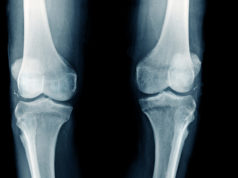
One might regard investigating delay in the treatment of ischaemic tissue lesions pointless and absurd at first thought because nobody wants to waste any time in the treatment of ischaemic ulcers. Katariina Noronen and colleagues, however, took on the task with the aim of discovering possible delays and thus enabling further improvement of the treatment process.
With the ageing population and the growing number of diabetic patients, the prevalence of ischaemic ulcers is expected to rise in the future. Unfortunately, the available resources for patient care rarely keep up with the patient population. As a result, the treatment of these patients will undoubtedly become even more of a challenge for vascular surgeons. Guidelines for the timing of revascularisation could provide some assistance in the matter, but no clear ones have been established so far. They are clear for situations when acute infection is present, especially in a diabetic foot ulcer, where urgent treatment including revision surgery and revascularisation is recommended. The majority of ischaemic ulcers, both diabetic and non-diabetic, however, are not acute but rather sub-acute or even chronic, and little has been stated for the urgency of revascularisation for these patients.
To establish some thresholds for the timing of revascularisation, we performed a retrospective analysis of electively referred patients with suspected ischaemic tissue lesions. We analysed the time spent on each step of the treatment process with the aim of discovering unnecessary delays in the process and also possible reasons behind the delays. We found that delays appeared in the form of urgent revascularisations assigned at the first visit or later in the process while waiting for the already assigned revascularisation as well as major amputations assigned at the first visit.
In the analysis of the constantly evolving decision-making process for revascularisation, we found re-revasculaisations as well as cross-over to open surgery to be notable, especially in patients first assigned to endovascular treatment. As for the endpoints, limb salvage and amputation-free survival were both superior in the open surgery group. In a multivariate analysis, diabetes was associated with poor limb salvage but no difference was seen in overall survival compared to non-diabetics. When revascularisation was achieved within two weeks, there was no difference in limb salvage between diabetic and non-diabetic patients. However, when the delay from referral to revascularisation exceeded two weeks, the limb salvage was significantly poorer in diabetics than in non-diabetics.
In order to provide high-quality care for patients with ischaemic ulcers, every vascular surgical unit ought to be aware of the possible delays in their treatment processes, for timely revascularisation is crucial, especially for diabetic patients.
Katariina Noronen is at Helsinki University Central Hospital, Helsinki Finland












is there any role of plaque localisation in diabetic patients such as tibial multıple vessel in order to get correct decision making process open surgery or PTA ? Thank you